Imagine standing in a gallery, each painting a reflection of a character's soul, crafted with meticulous detail. In "The Neon Demon," Erin Benach's costume design functions much like those artworks, weaving the narrative of ambition and transformation through striking outfits. Each piece tells a story, from Jesse's gradual shift to boldness to the supporting cast's attire that exposes the harsh realities of beauty standards. Yet, as you explore these fashion choices, you might start to wonder how they shape the characters' fates within the film's haunting world.
Overview of The Neon Demon
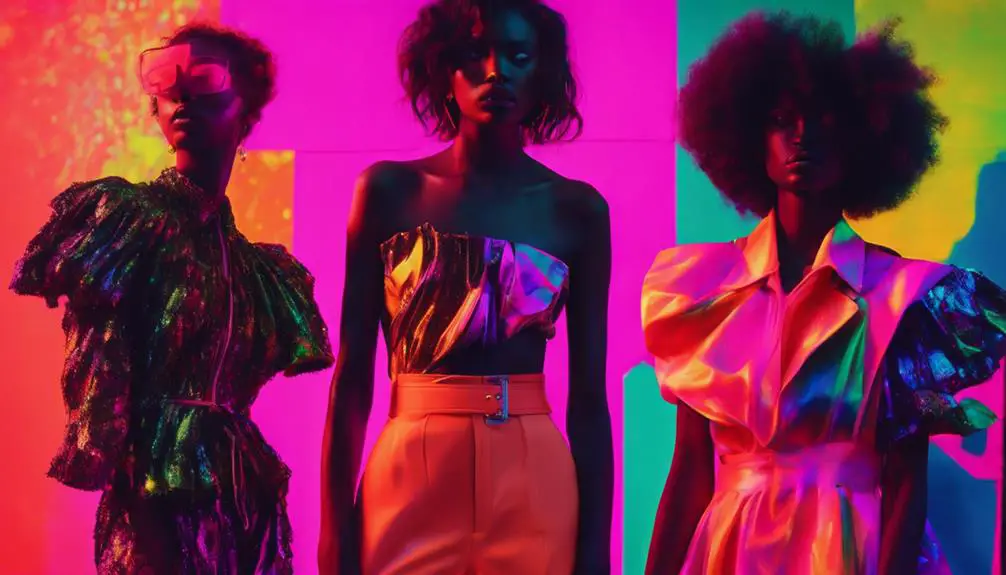
"The Neon Demon" plunges you into the dark and alluring world of high fashion, where beauty is both a currency and a weapon. Starring Elle Fanning as Jesse, a young runaway traversing the cutthroat modeling world, the film explores the intoxicating power of beauty and the obsession it breeds.
This psychological horror film, directed by Nicolas Winding Refn, presents a striking critique of societal beauty standards, showcasing the psychological toll they exact on individuals.
Costume designer Erin Benach plays a pivotal role in shaping this narrative, utilizing high-fashion pieces that reflect the characters' personalities and transformative journeys. Each outfit, from stunning Emporio Armani ensembles to avant-garde creations, serves to highlight the intense competition inherent in the fashion industry.
As Jesse investigates deeper into this ruthless environment, you'll witness how her identity becomes entwined with her appearance, illustrating the precarious balance between allure and peril.
With its sleek visuals and haunting themes, "The Neon Demon" invites you to question the very nature of beauty and the lengths one might go to attain it, making for an unforgettable cinematic experience.
Costume Design and Inspiration
Costume design in "The Neon Demon" plays an essential role in conveying the film's themes and character dynamics. Erin Benach, the costume designer, expertly blends high-fashion elements with the psychological themes of the narrative. From the outset, you're drawn into the fashion world through Jesse's eye-catching metallic blue strapless top and skirt from Emporio Armani. This striking outfit isn't just about aesthetics; its reflective qualities amplify the film's visual impact.
Additionally, the film's exploration of vintage fashion resonates with the distinct styles and logos, reminiscent of iconic brands, such as Versace's logo evolution, which further emphasizes the significance of heritage in the fashion industry.
Benach's inspiration stemmed from the Saint Laurent spring 2015 campaign, which helped shape the color palette and silhouette choices throughout the film. The incorporation of vintage pieces from iconic designers like Armani and Saint Laurent adds depth to the characters, reflecting the diverse archetypes within the fashion industry.
A standout moment occurs with the custom gown designed by Giles Deacon for the runway scene, where the fusion of high-fashion and horror aesthetics truly shines. This combination not only captures the essence of the fashion world but also reveals the darker undertones of ambition and beauty.
Iconic Outfit Highlights
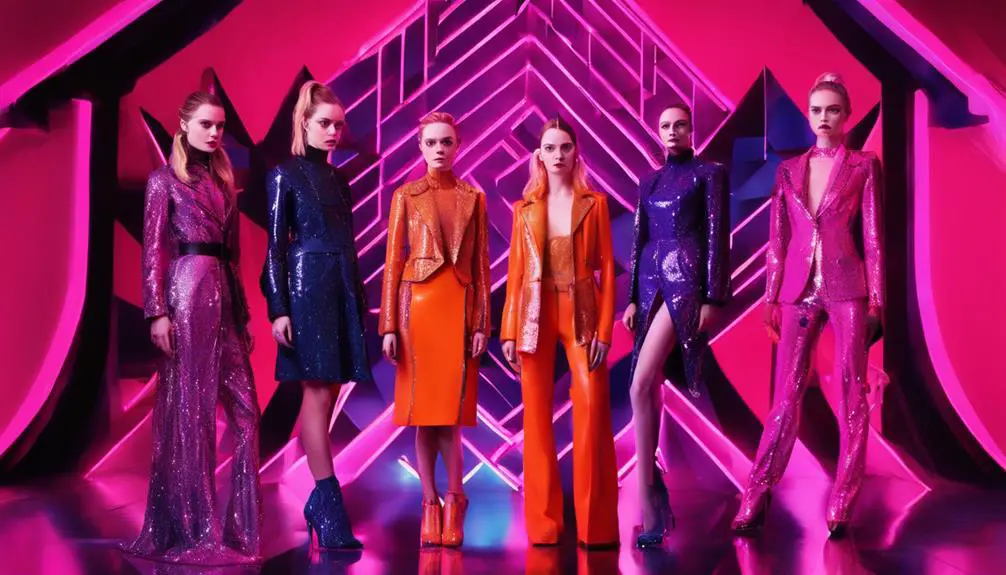
Several standout outfits in "The Neon Demon" vividly illustrate Jesse's journey through the fashion world. One of her opening looks features a striking metallic blue strapless top and skirt from Emporio Armani, with its reflective qualities capturing your attention immediately.
As the film progresses, Jesse dons a custom dark, sparkly full gown designed by Giles Deacon, which plays a pivotal role in a runway scene, symbolizing her transformation and rise in the industry.
In a particularly memorable mansion scene, you can't miss the ethereal seafoam green gown, an embodiment of beauty that signifies Jesse's entry into high fashion.
Another iconic moment arrives with her plunging gold sequined halter top, marking a significant shift in her character's journey as she ascends the modeling ranks.
Jena Malone's character Ruby complements Jesse's evolution with her own avant-garde style, sporting vintage Armani and Saint Laurent separates that reflect her deep connections to the fashion world.
Each outfit, from the runway to intimate settings, not only enhances the visual narrative but also resonates with the overarching themes of ambition and transformation in this enthralling film.
Character Style and Identity
As Jesse navigates the treacherous waters of the fashion industry, her wardrobe shifts dramatically, signaling her evolving identity. Initially adorned in soft pastels and bohemian styles that reflect her innocence, Jesse soon adapts to bold, high-fashion pieces that embody her transformation into a figure of vanity and ambition.
Each outfit becomes a visual representation of her journey, from the metallic blue strapless Emporio Armani dress she wears during her debut—a stunning piece chosen for its reflective qualities—to more daring ensembles that showcase a hard edge. This evolution echoes the essence of vintage Ralph Lauren's cultural impact, as both showcase a journey of identity through clothing.
Supporting characters like Gigi and Sarah further illustrate the pressures of the modeling world; Gigi's looks emphasize manufactured beauty, while Sarah's style offers a more relaxed, off-duty vibe.
Ruby, portrayed by Jena Malone, dons vintage Armani and Saint Laurent, highlighting her avant-garde sensibility and complex relationship with beauty and competition.
Jesse's wardrobe isn't just clothing; it's a significant aspect of her character style, mirroring her aspirations and struggles in the cutthroat fashion environment.
As you watch her journey unfold, you can't help but admire how each outfit tells a story of ambition, identity, and the elusive nature of physical beauty in an ad campaign or fashion show.
High-Fashion Themes in the Film
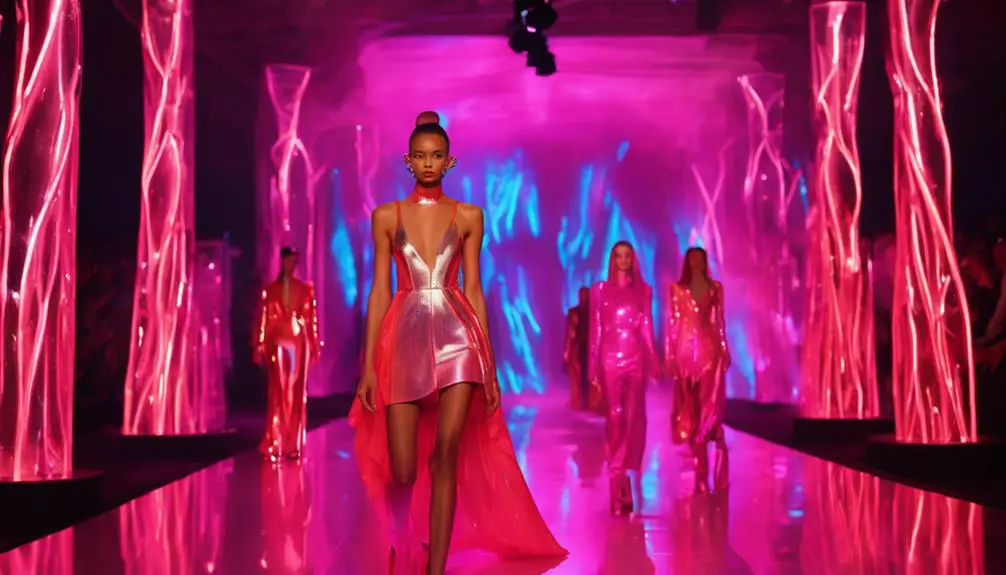
In "The Neon Demon," high-fashion elements serve as both a visual feast and a biting critique of society's obsession with beauty. Directed by Nicolas Winding Refn, the film immerses you in the glamorous yet cutthroat fashion world, showcasing striking costumes designed by Erin Benach in collaboration with renowned designers like Armani and Giles Deacon.
You'll notice how Jesse's evolving wardrobe—from soft pastels to bold, reflective gowns—mirrors her ascent in the modeling industry, highlighting the psychological toll this journey takes on her.
The film's runway scene is a standout moment, featuring custom dark, sparkly gowns that dazzle with embellishments and exaggerated silhouettes, particularly from Marina Hoermanseder. These high-fashion elements not only captivate the eye but also comment on the extreme standards of beauty that dominate the industry.
You can feel the tension and competition, especially in the Steven Klein-esque photoshoot sequences, where Abbey Lee and Bella embody the vanity and darkness lurking behind the glamorous facade.
"The Neon Demon" challenges you to reflect on the often surreal realities of modeling, making it a unique exploration of fashion's dual nature.
Impact of Fashion on Narrative
Fashion in "The Neon Demon" doesn't just adorn the characters; it drives the narrative forward, shaping their identities and interactions. The film immerses you in a world obsessed with beauty, where each outfit becomes a powerful visual metaphor. For instance, Jesse's shift from pastel bohemian styles to a striking black halter top and leather pants illustrates her internal conflict and eventual embrace of vanity. This transformation reflects the psychological pressures faced in the cutthroat modeling industry, akin to the way vintage Chanel items encapsulate a rich narrative of fashion history and significance, representing both style and craftsmanship historical significance in fashion.
Costume designer Erin Benach brilliantly integrates high-fashion elements, such as Jesse's Emporio Armani dress embellished with Swarovski crystals, enhancing the film's critique of societal beauty standards. Characters like Gigi and Sarah represent manufactured beauty and glamorous sophistication, respectively, creating a stark visual critique of fashion's impact on self-image.
The bold colors and exaggerated silhouettes amplify the film's surreal aesthetic, making each costume feel more like clothing that embodies the characters' struggles. From Lee and Bella Heathcote's contrasting styles to the emotional weight of their choices, the fashion in "The Neon Demon" becomes an essential component of storytelling, revealing the dark side of ambition in a world where beauty is everything.
Frequently Asked Questions
What Do the Triangles in Neon Demon Mean?
The triangle symbolism reflects character dynamics and cultural implications, enhancing the narrative structure. It emphasizes psychological themes and visual aesthetics, while color significance in fashion analysis illustrates the tension between ambition and destruction in the pursuit of beauty.
Why Did They Eat Jesse in Neon Demon?
In "The Neon Demon," they eat Jesse to symbolize the beauty industry's moral decay. Her transformation highlights obsession themes and female competition, while cannibalism serves as an artistic representation of the supernatural elements driving their envy.
Is the Neon Demon Based on a True Story?
No, "The Neon Demon" isn't based on a true story. It's an artistic interpretation critiquing Hollywood influence, beauty standards, and fame obsession, using fashion symbolism and psychological horror to explore female rivalry and cultural critique.
What Is the Message of the Neon Demon?
The Neon Demon reveals how beauty standards and societal pressure fuel youth obsession with fame culture. It showcases horror elements through superficial relationships, highlighting character motivations and the dark side of artistic expression within the fashion industry.
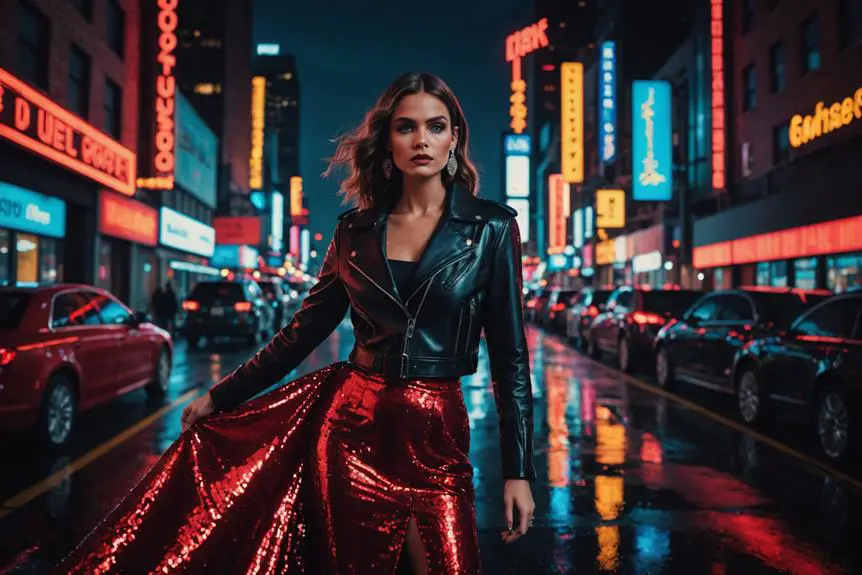


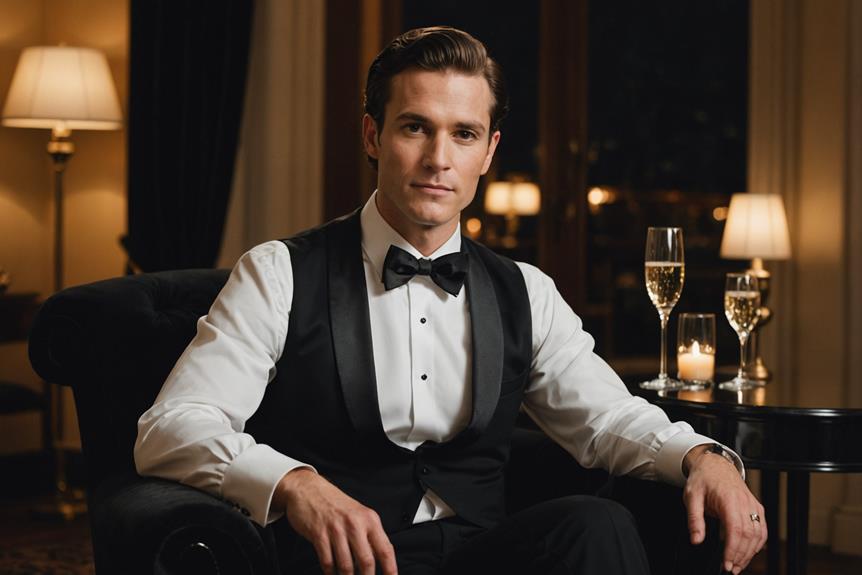
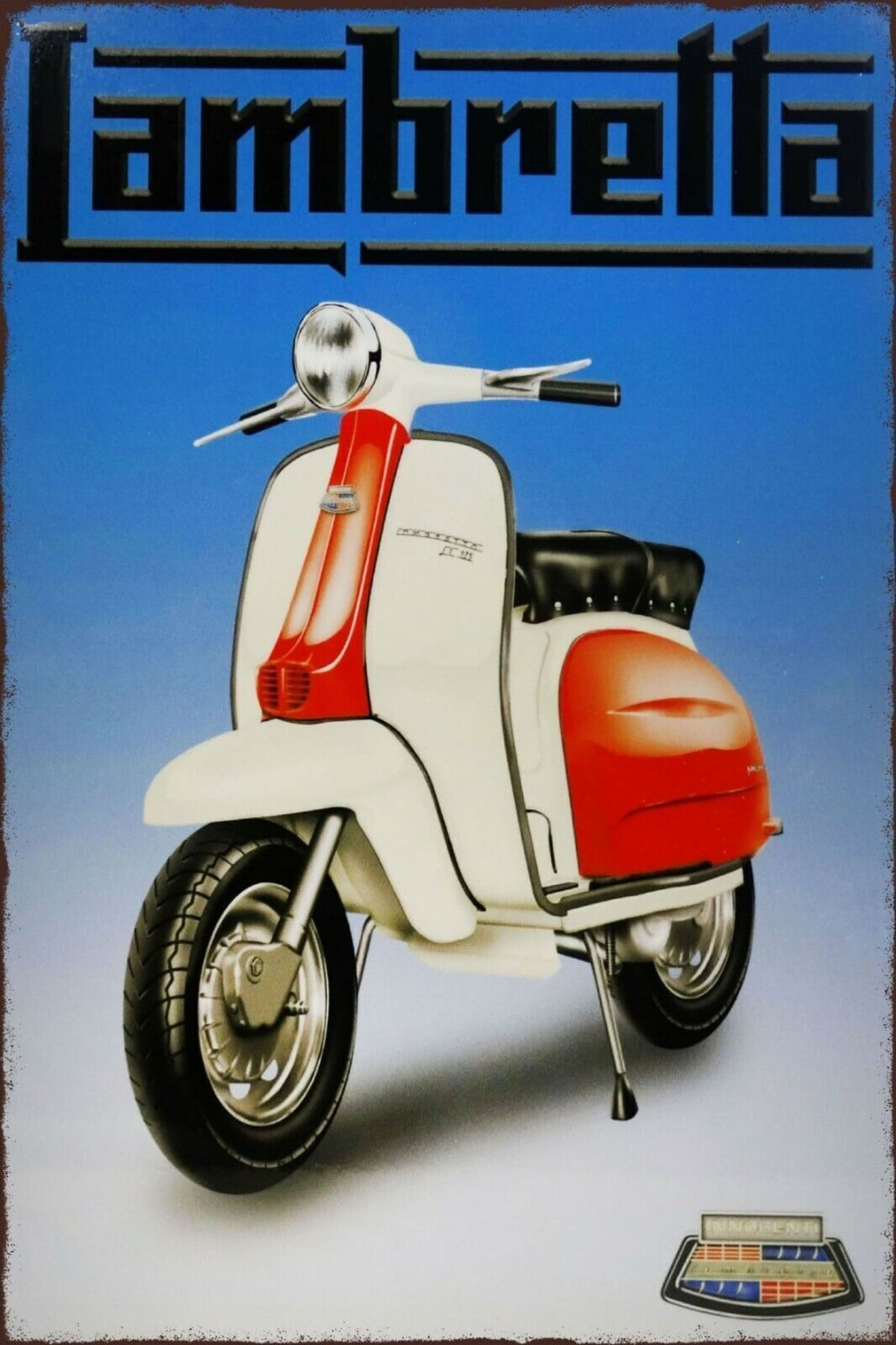
Helpful stuff Thanks.
casino en ligne
Many thanks! Very good information.
casino en ligne
You actually stated that really well.
casino en ligne
Amazing many of superb information.
casino en ligne
You stated that terrifically!
casino en ligne
Nicely put, Kudos.
casino en ligne
Terrific knowledge, Cheers.
casino en ligne
Thanks! Great information.
casino en ligne
Amazing quite a lot of very good material.
casino en ligne
You mentioned this very well.
casino en ligne